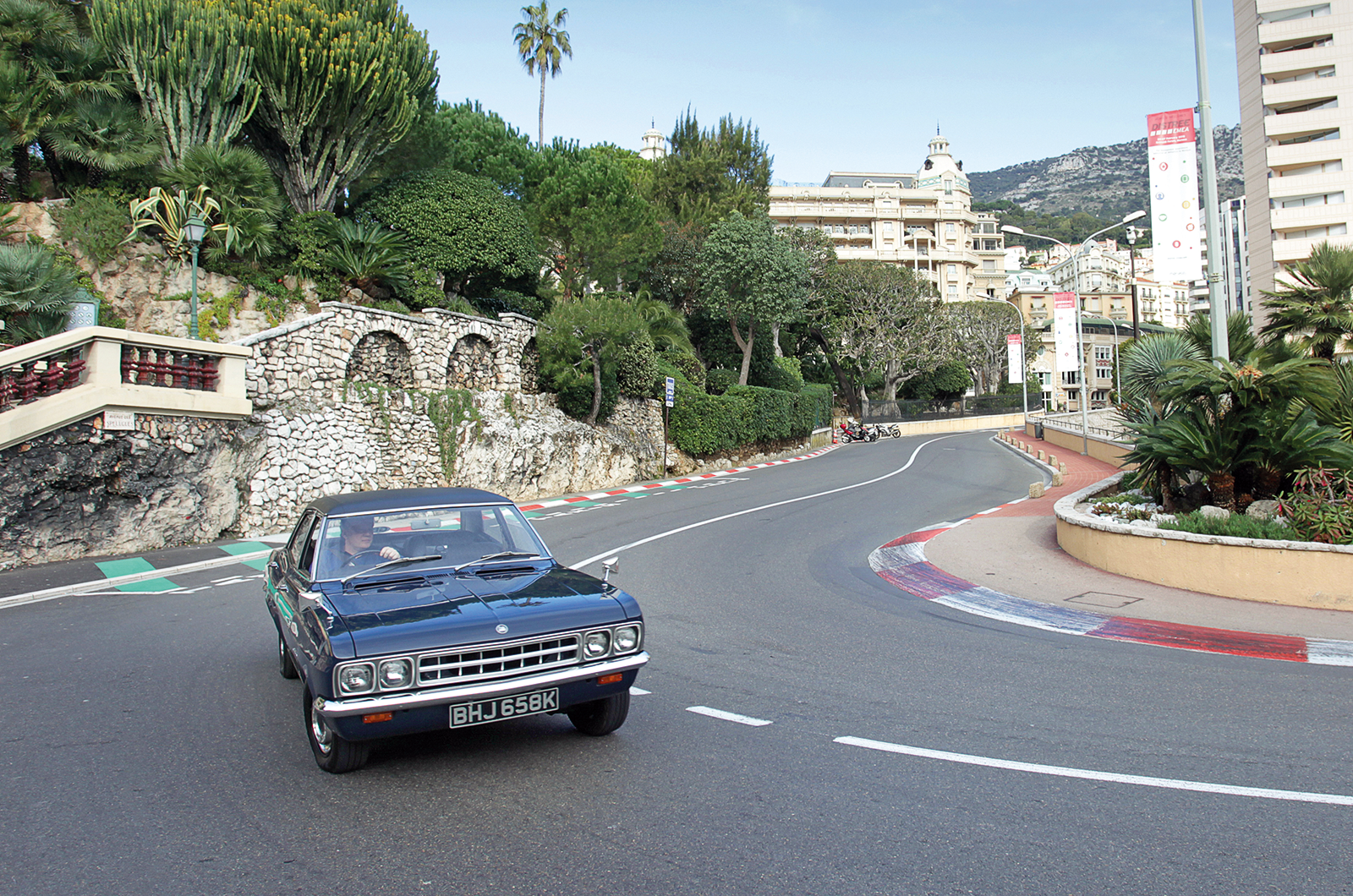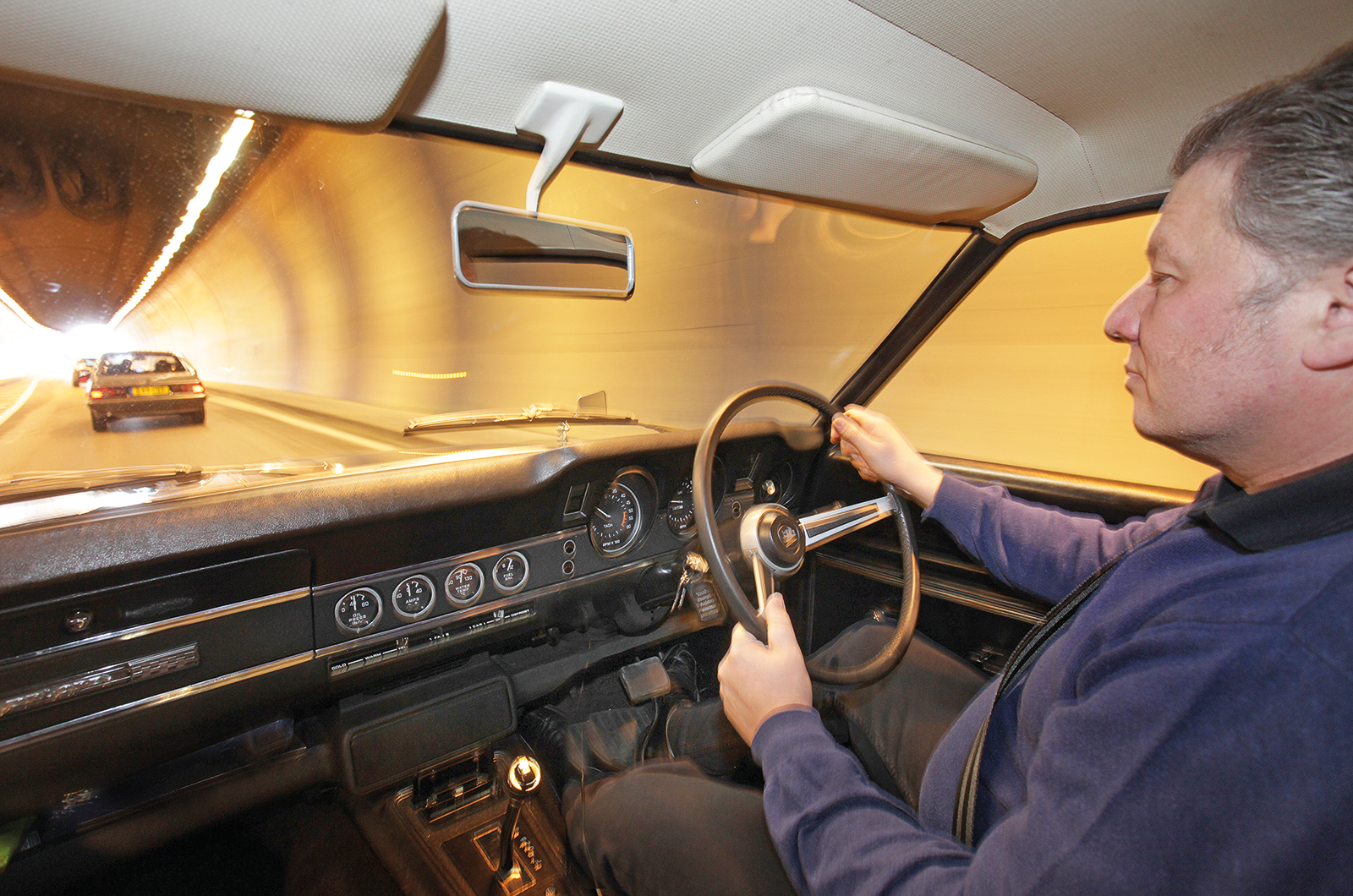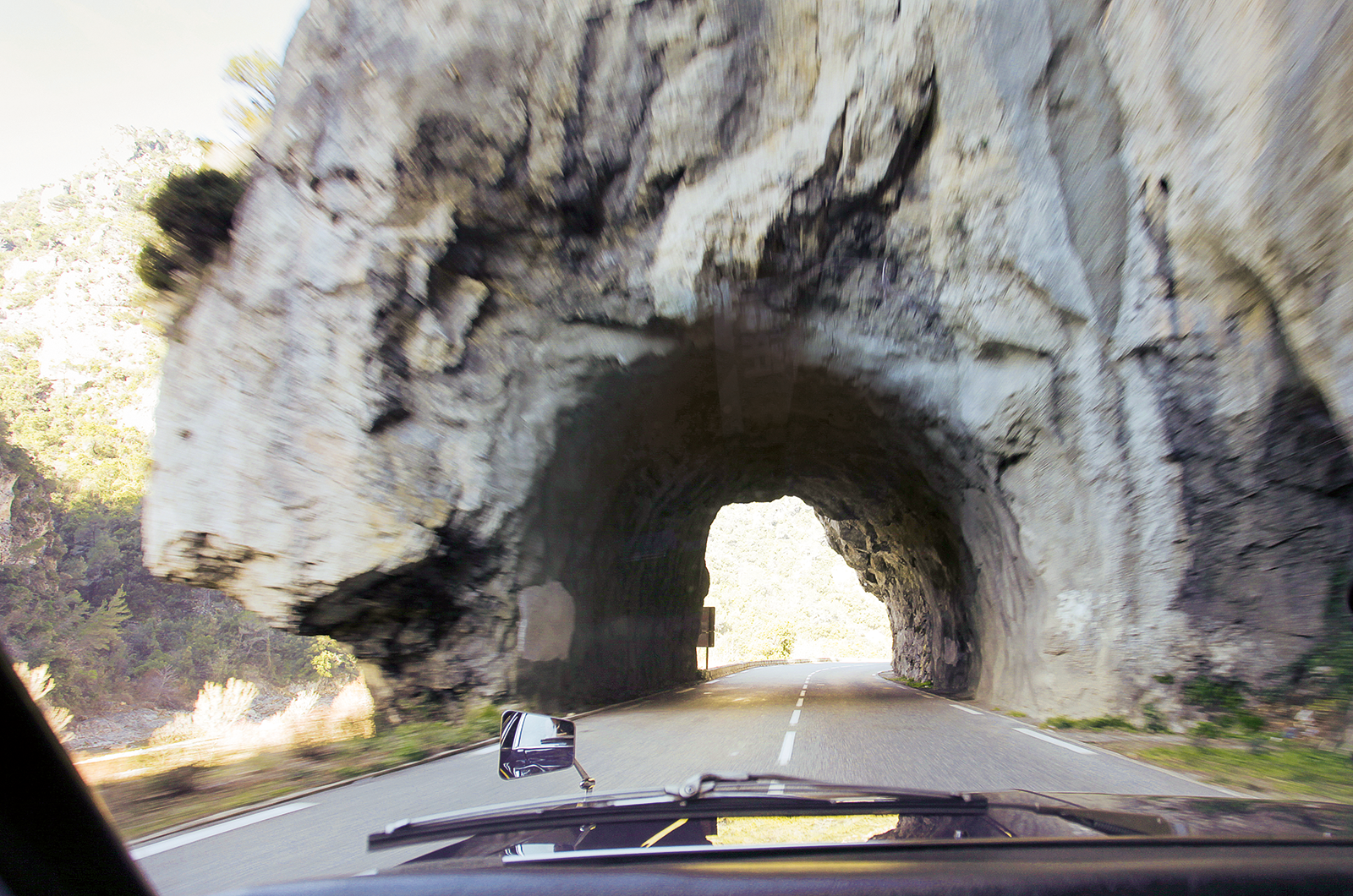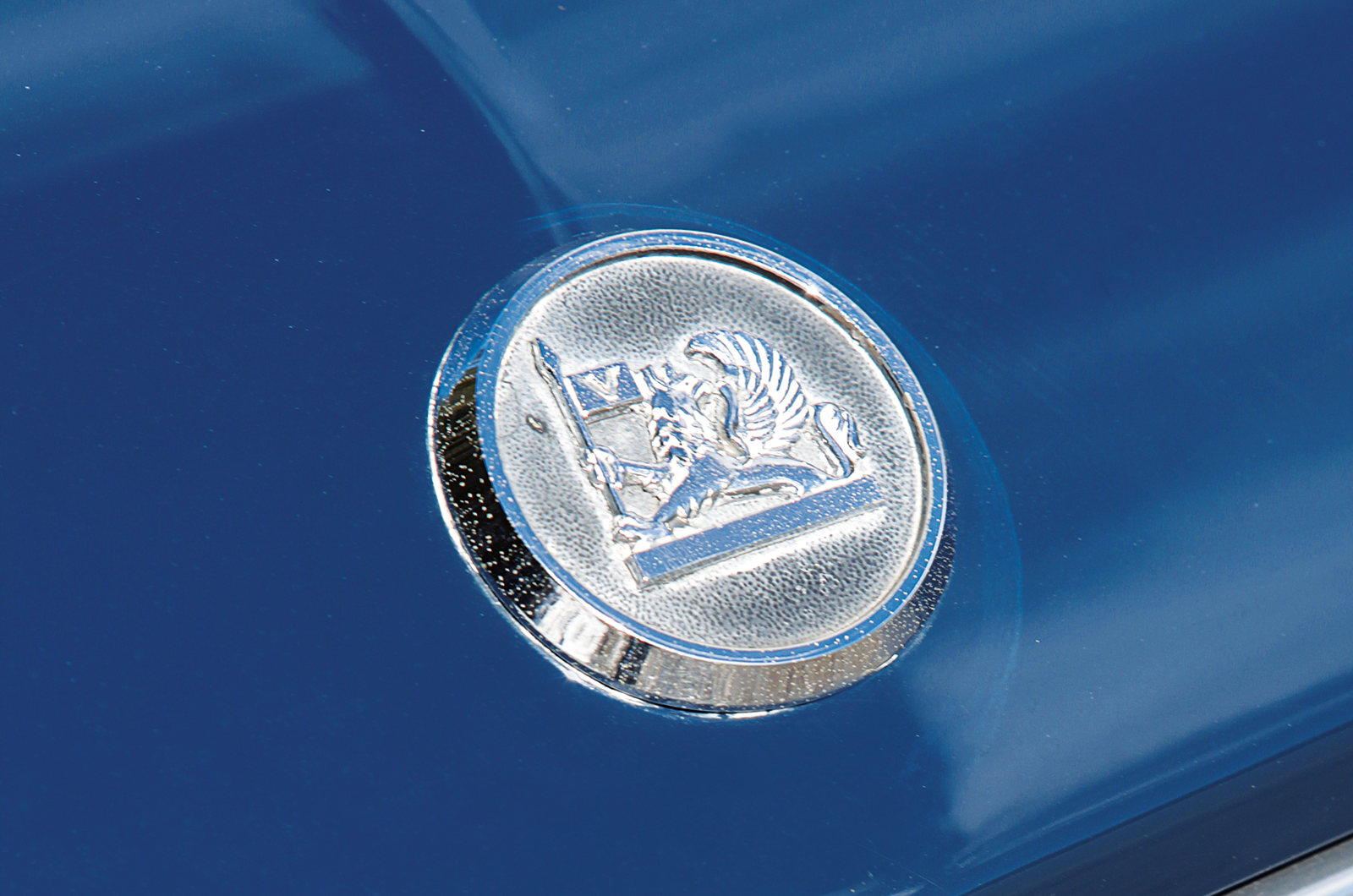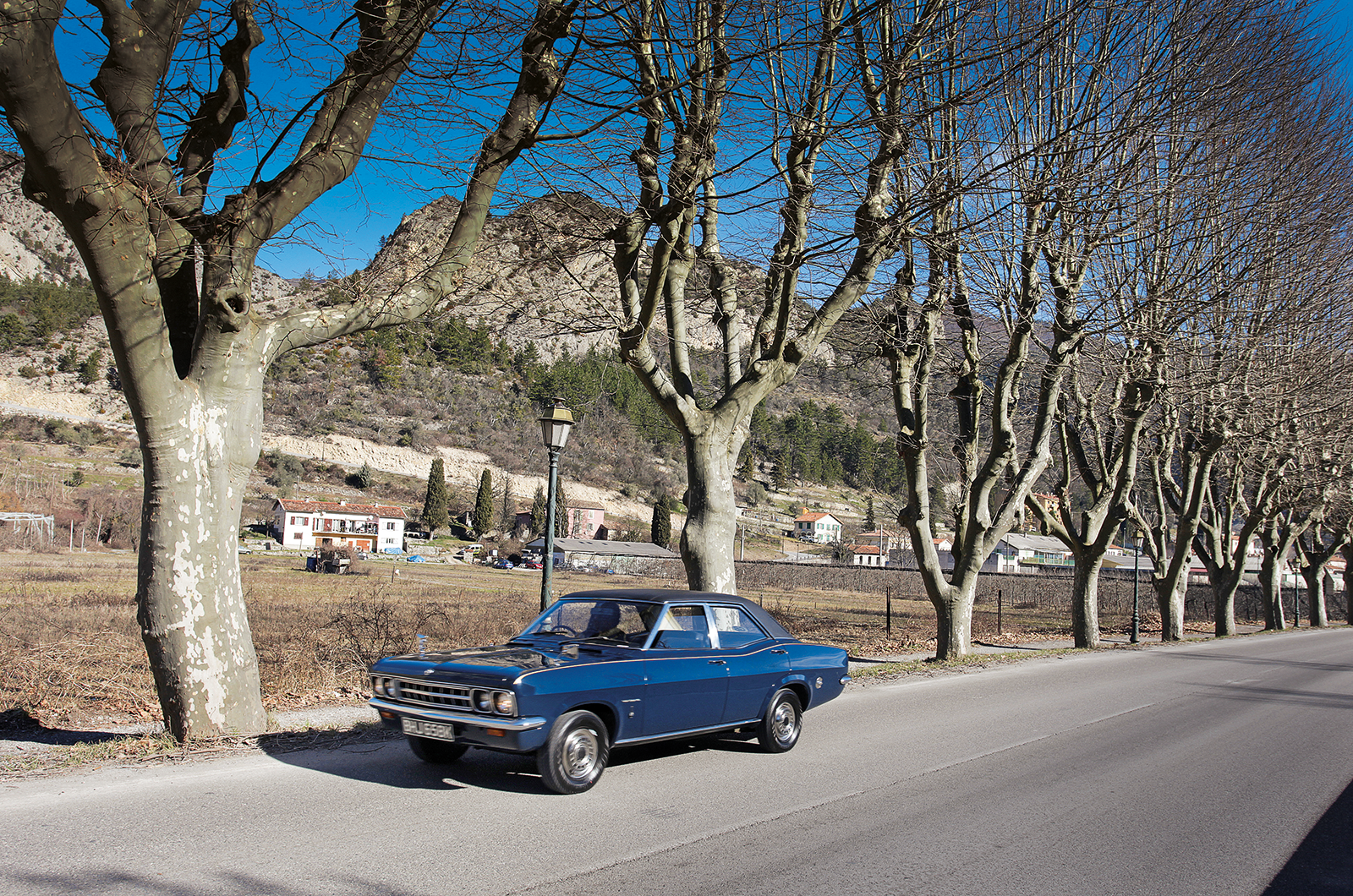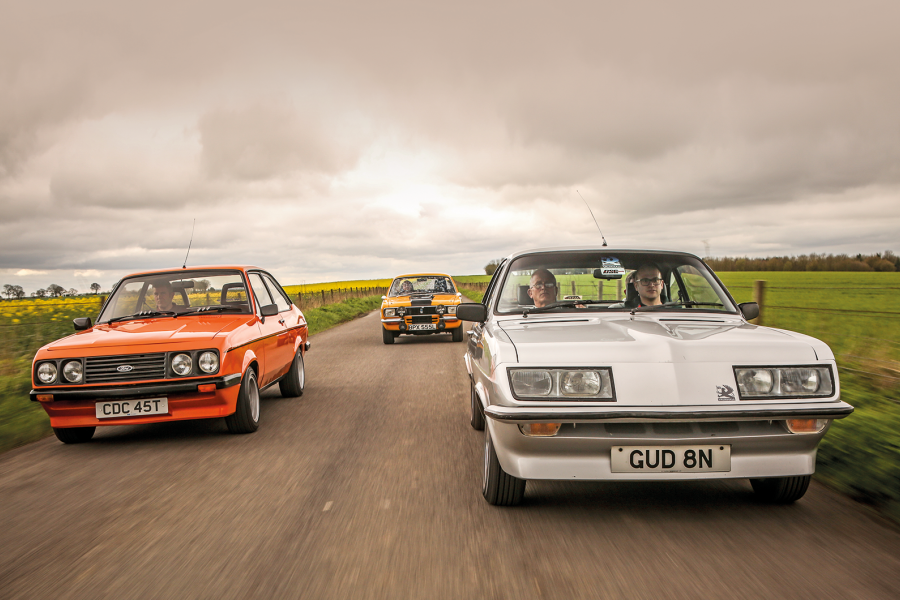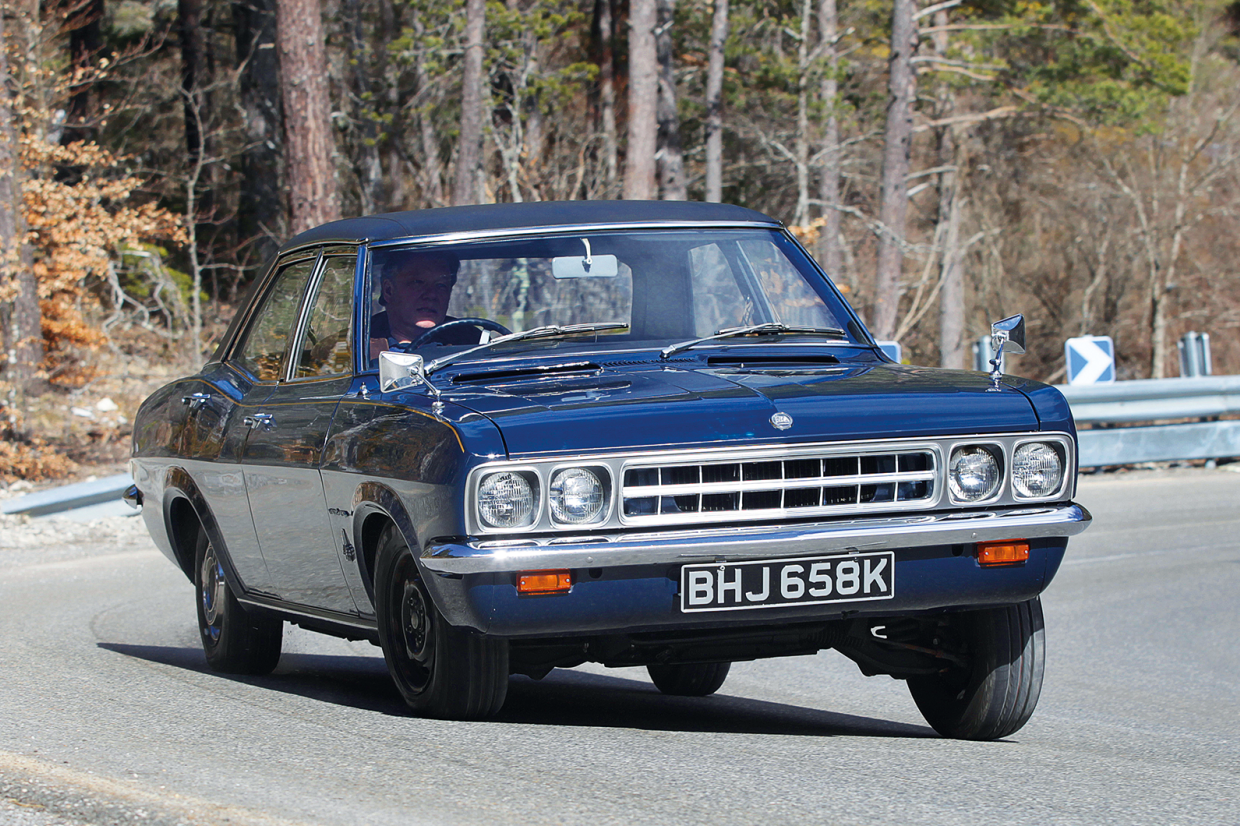
Parked in Casino Square at the beginning of Vauxhall’s annual ‘Griffin Greats’ road trip from Monte-Carlo to Geneva, the dark blue Ventora is getting some admiring attention.
Amid the florid shapes and colours that are the trademark of most of today’s cars, it cuts a distinguished figure and I’m pleased to be getting exclusive use of it for the next two days.
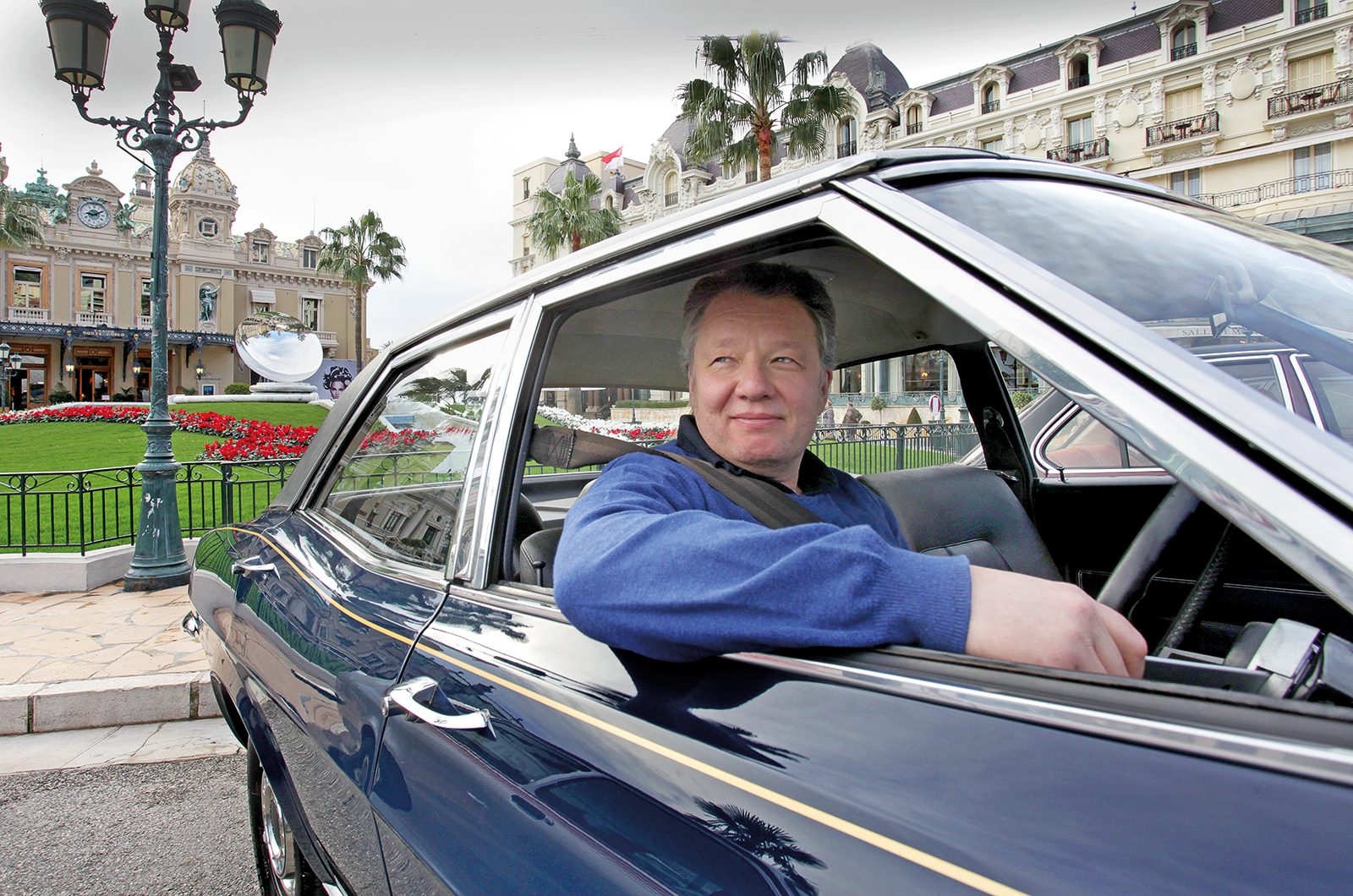
Our international jet-setter prepares to leave Monaco’s Casino Square in the Vauxhall Ventora 2
It is warmed up, fuelled and ready to go, but, as we motor out of town with smooth six-cylinder dignity towards the 10:30am coffee stop at Entrevaux, I still feel slightly chastened by Vauxhall PR manager Simon Hucknall’s comment the evening before.
When I suggested that a Ventora felt out of context on the French Riviera, he said: “Yes, but hasn’t it got just as much right to drive on these roads as anything else?”
I had to agree, but somehow it still feels as if the scenery is being back-projected and I’m some mute ITC henchman who will shortly have a punch-up with Jason King behind some potted palms.
In fact, the Ventora was a favourite in Department S, usually driven by King’s sidekick Stewart Sullivan.

